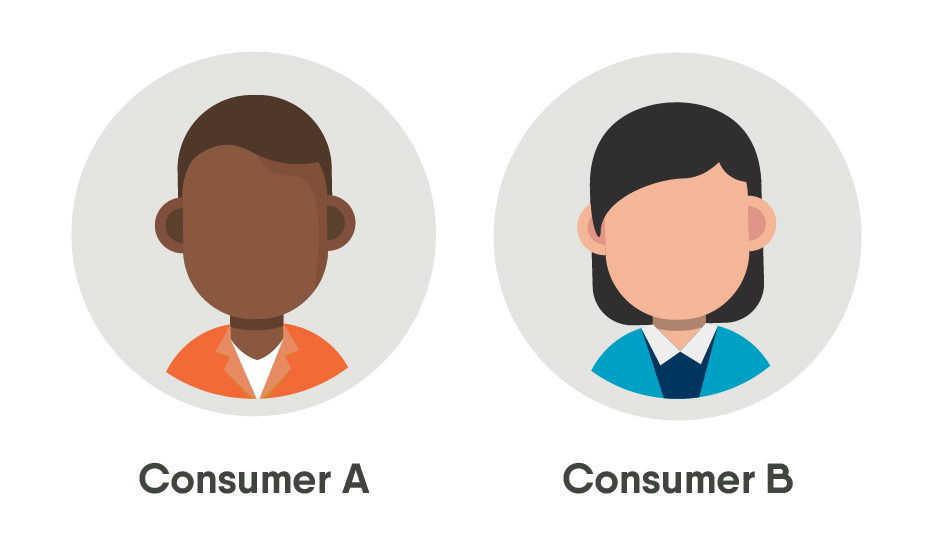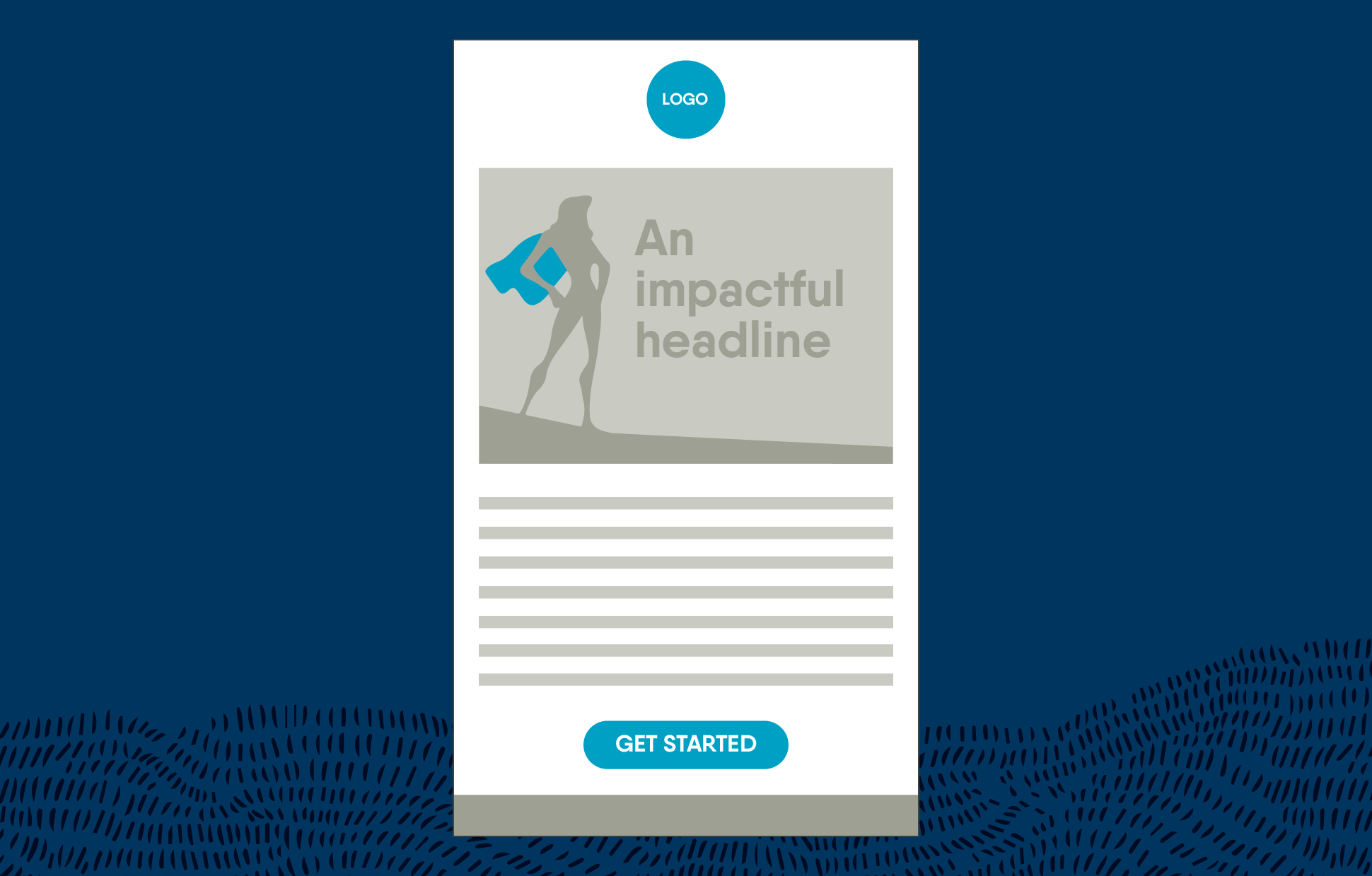How to write an effective marketing email.
December 07, 2020 // Email Marketing
Are your emails sending the right message? In this second installment of our email marketing blog series, we want to share some tips and best practices for writing marketing emails that resonate and motivate your audience. But first, we encourage you to check out our previous article on the anatomy of a high-performing email if you haven’t done so already.
Now, let’s get started.
Identifying your audience and goals.
Before you or a copywriter begins writing, it’s important to figure out the purpose of your email or email campaign. Are you hoping to build awareness of your company and garner engagement by offering helpful and relevant resources? Are you trying to drive quote requests and consultations? Are you seeking to increase sales with an exclusive offer? Are you trying to drive traffic to a new product or service page on your website? These are just a few examples of what the purpose of your email could be. But whatever purpose you identify, make sure it’s measurable.

Next, you need to determine who you’re talking to. What interests Customer A, might not interest Customer B — which is why you can’t rely on one email to hit the mark with your entire subscriber or customer base. That’s why it’s important to break your list into key audience segments and write emails that speak to the challenges, needs and interests of each segment. Once your audience has been selected, you’re ready to write.
Hook them with your subject line.
When it comes to whether your email gets opened or discarded in the trash folder, a good subject line can make all the difference. Use them to pique your audience’s interest around a topic they care about or present a simple solution to a nagging problem. Here are some examples:

And if you’re running a promotion or trying to boost event registration numbers, your subject line can be used to create urgency and drive actions by incorporating terms like “offer ends Friday,” “today only,” “limited spots available” or “don’t miss out.”
When writing subject lines, there are a few best practices to keep in mind. Generally, using numbers, statistics or questions is a good place to start. However, you’ll want to run an A/B test on your subject lines to find out what style and phrasing gets your specific audience to open and read. Another rule of thumb is to keep subject lines under 60 characters in length to avoid truncation. And if your audience primarily views their email inbox on their mobile device, the shorter the subject line, the better.
It’s also best to avoid using the following in your subject lines to ensure your email doesn’t get flagged as spam:
- Using “RE” or “FWD” when the email is not forwarded or a reply
- Using multiple exclamation points or ALL CAPS
- Using too many spam trigger words like “free,” “profit,” “earn” and “amazing”
- Using words that are manipulative, misleading, pushy or too salesy
Don’t forget the preheader.
When you’re looking at your inbox, the preheader appears as the first sentence after the subject line. Preheaders are the perfect opportunity to give your audience a little extra detail about what they can expect to find within your email or to elaborate on the message provided in the subject line, like this:

When developing your preheader, make sure it complements the subject line. The best way to do this is to write the subject line and preheader together and read it back to yourself. If it has a natural flow, then you’re on the right track. Another thing to keep in mind is that space is limited with preheaders, so keep them to 50 characters max.
Keep the content short and sweet.
The average person skims their emails, so making the body of your email short and scannable is crucial. To help keep content to a manageable level, refer back to the original goals you had set. For example, if you’re trying to drive traffic to a new product page on your website, use the email to provide the quick-hit version of your product benefits and then encourage your audience to “learn more” on your website.
Beside linking to landing pages, you can also provide links to supporting videos or downloadable content that contain the bulk of the information you want your audience to consume. Not only does this help keep your email streamlined, it gives your audience a reason to click through and engage with your company and content further.
If linking to additional information is not an option, try breaking up the body of your email into smaller sections using subheads and opt for bulleted lists instead of large clunky paragraphs. You could also consider writing a series of emails — each focusing on a specific element of the larger story you’re trying to tell.
Have a relevant conversation.
Another consideration when writing emails is to lead with the information that your audience is seeking (the reason they opened your email in the first place). Within the first 5 seconds of reading, your audience should have a solid understanding of the solution, offer, insight or tip that you’re providing.
Lastly, keep things conversational — you’re speaking to a human being after all. And avoid using too much jargon unless your audience is fluent in your industry’s language.
Provide a strong call to action.
If you’re after click throughs, you’ll need a call to action (CTA) that encourages your audience to take that next step. So let’s talk buttons. CTA buttons should be 2 to 3 words max and use a verb that describes the action you’re asking your audience to take, like “read more,” “get started,” “shop now” or “sign up today.” If your email contains two or more buttons, try mixing up the language to avoid repeating the same CTA. And if you really want to start optimizing, run an A/B to find out which CTA button garners the most clicks.

Another type of CTA — although more subtle — is the text link. Text links exist within the body of your email copy and can be used to link to supporting content. Here’s an example:
To learn more about high-performing emails, check out our previous article.
When creating text links, keep them to a couple words in length unless it’s the title of an e-book, guide or study. Also, aim to work in text links naturally and avoid the use of “click here” (e.g., To view our previous article, click here.).
Feel free to use both text links and CTA buttons within your email to create more opportunities for your audience to engage — but use them in moderation. Also, make sure that the CTA is linking directly to the content that was promised. Any type of bait and switch or content that’s not available in a single click can count against you in the brand trust department.
If you’re interested in learning more about email marketing or would like to connect with an email marketing strategist, give us a shout. In the meantime, be on the lookout for the next article in this series, which will dive into the elements of a well-designed email.
This article was published before January 2024 and does not reflect the consolidation of Performance Marketing, Vector Haus, and Blue Traffic into Anthologic.